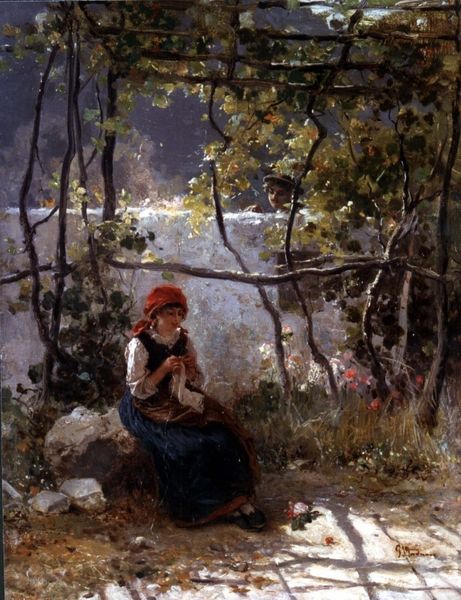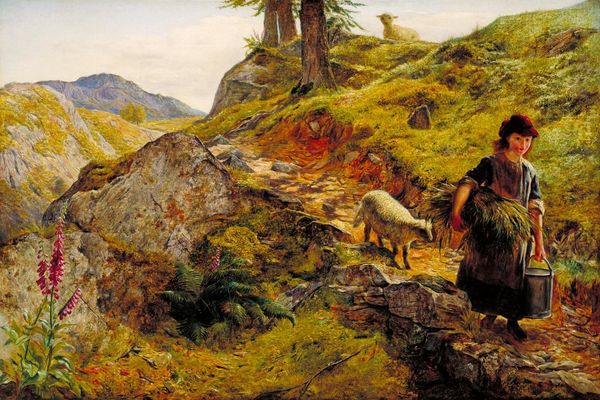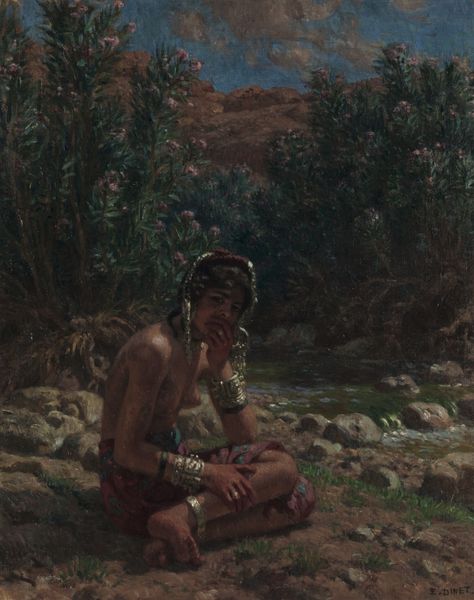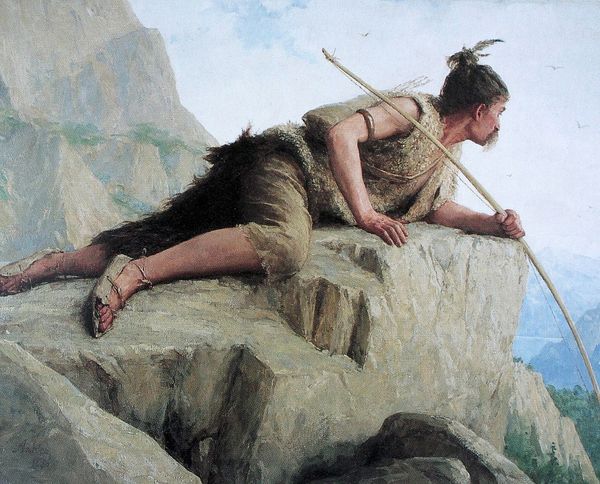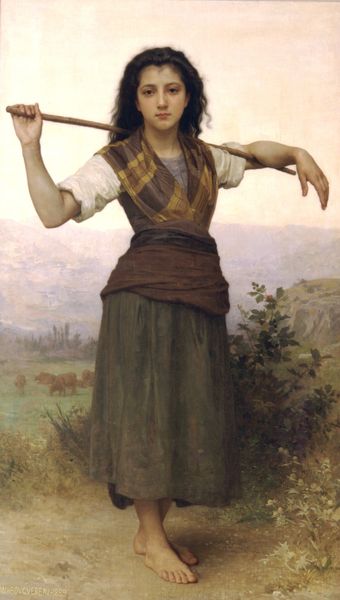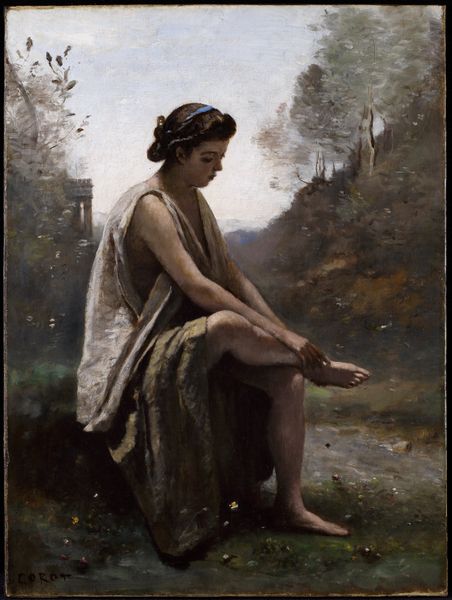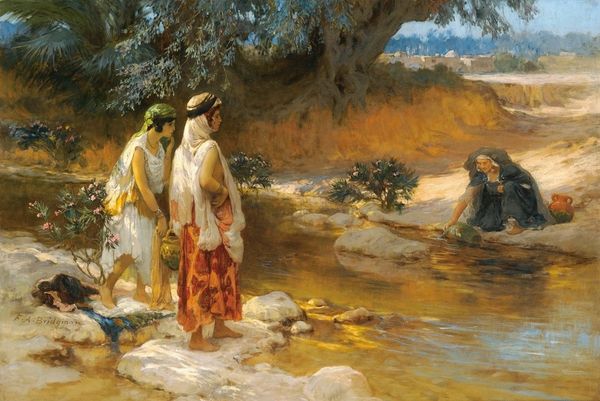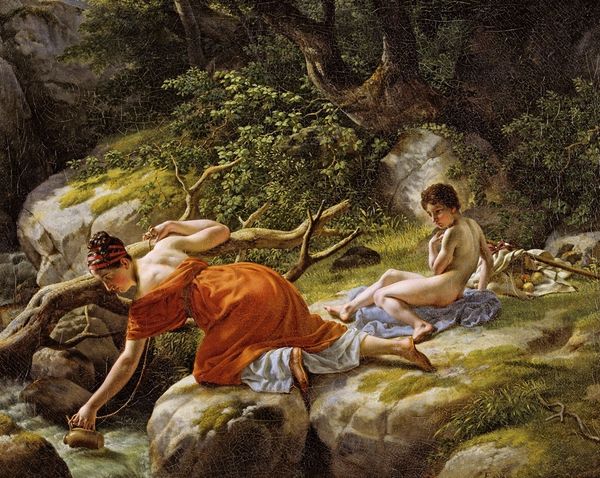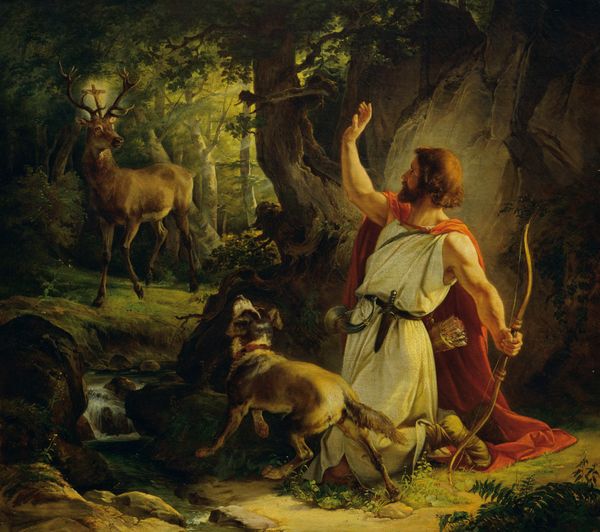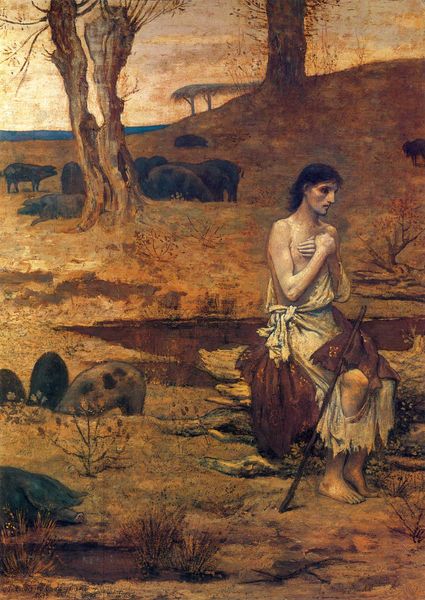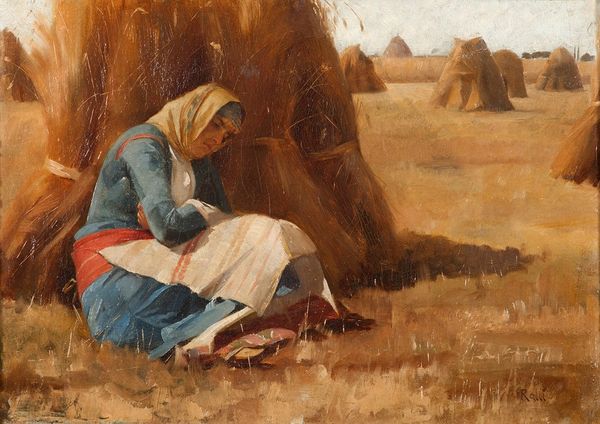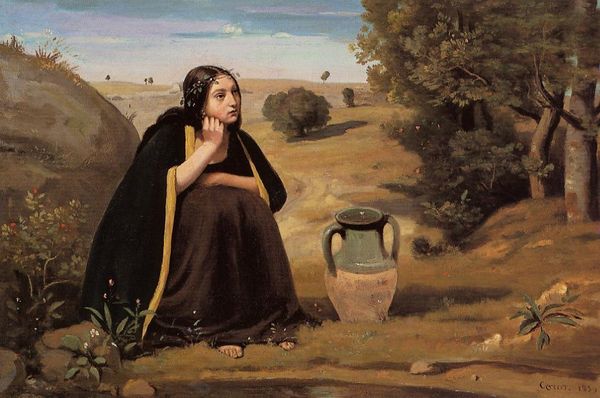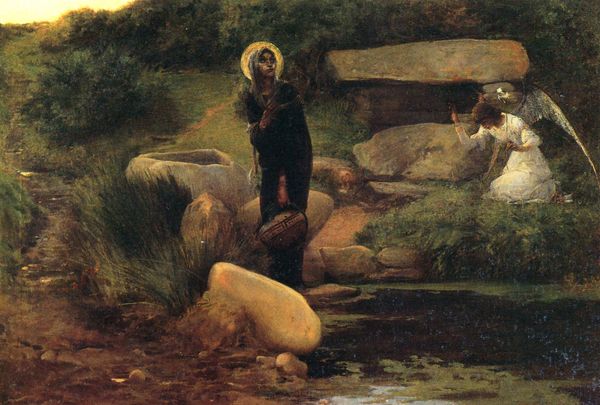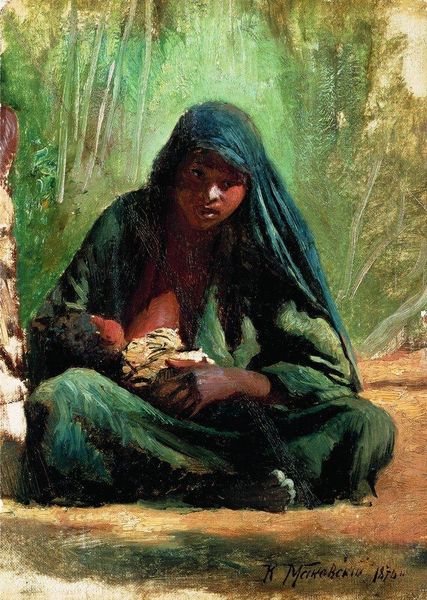
painting, oil-paint
#
portrait
#
painting
#
oil-paint
#
figuration
#
underpainting
Copyright: Public domain
Curator: Here we have Eastman Johnson's painting, "Hiawatha," created in 1857 using oil paint. Editor: My first impression is the striking contrast between the solitary figure and the densely packed forest. There’s an immediate sense of quietude. Curator: Indeed. Johnson painted this during a period when depictions of Native Americans were shifting in American art. While popular portrayals often focused on romanticized or stereotypical imagery, Johnson sought a more sensitive approach. "Hiawatha," the hero from Longfellow’s epic poem, embodied for many Americans a sense of loss and a connection to nature. Editor: I'm drawn to the subtle color palette; the deep greens of the forest give way to ochre hues in the foreground where Hiawatha sits. And consider the play of light: see how it glances off his bare arms and feet? It's almost a classical device, focusing the viewer on the human form within the grand natural setting. Curator: Johnson's approach has been debated. Was he celebrating Indigenous culture, or contributing to its romanticization and eventual disappearance in the face of American expansion? He positions Hiawatha within nature as a sort of personification of the land itself, reflective of the then-dominant narrative. Editor: Regardless of its intent, the composition itself is beautifully structured. The diagonal line from the lower right toward the darkness of the woods—note also the almost mirroring curve of the young man’s shoulders and back. There's a formal elegance here, even beyond the historical reading. Curator: Absolutely, and the Hudson River School influences are clear here. Nature isn't just a backdrop; it’s a protagonist, almost bearing witness to this moment of reflection. The image itself operates within the public debate over manifest destiny and the cost of westward expansion on Native peoples and their cultures. Editor: A thoughtful work, then, in its way. One sees skill in its brushwork, for sure, but this reading lends it complexity, especially in regards to Johnson's position as an artist navigating a politically fraught subject. Curator: Exactly. This artwork reveals as much about 19th-century American society and its anxieties as it does about Hiawatha himself.
Comments
No comments
Be the first to comment and join the conversation on the ultimate creative platform.
